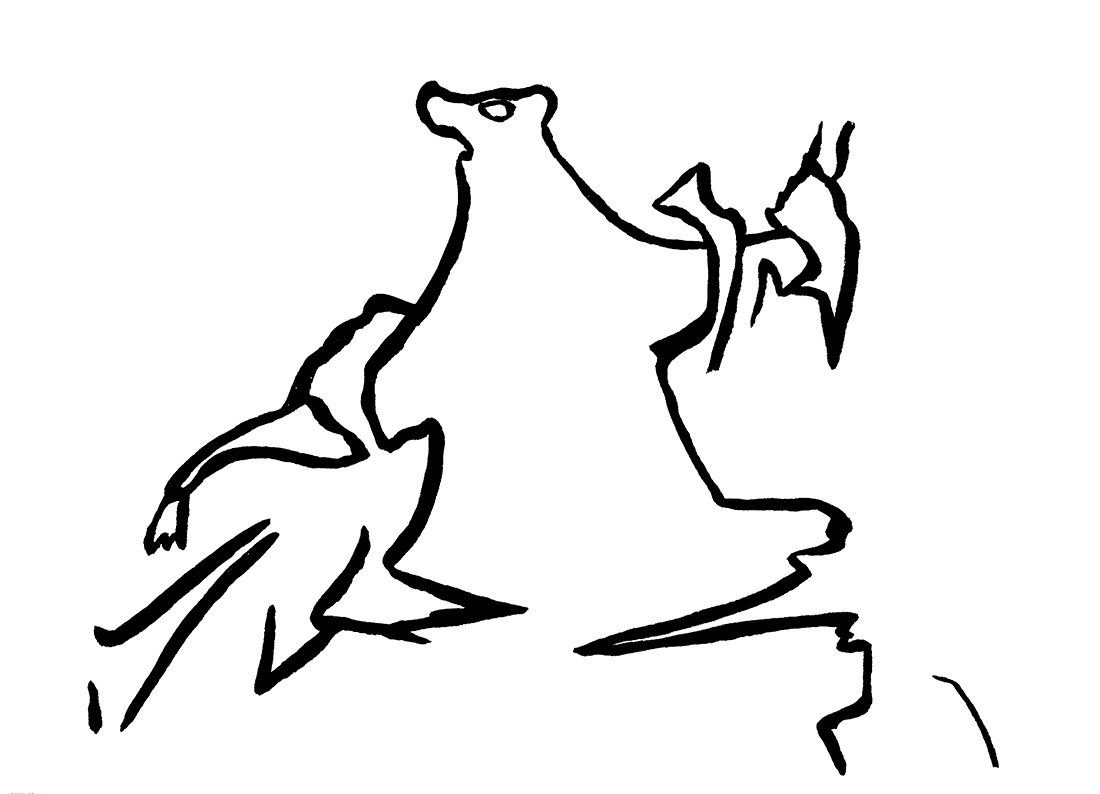Anthropomorphism (or the reclamation thereof)
Hana Yoo
Related terms: hybrid, cyborg, anthropocentrism, human exceptionalism, storytelling, otherness

There is an old and often-retold story about a butterfly and a dream. It dates back to around 300 BCE. Once, Zhuang Zhou dreamt he was a butterfly, flitting joyfully among blooming flowers, entirely forgetting his human self. Upon awakening, he was Zhuang Zhou again, yet uncertain: was he a man who dreamt of being a butterfly, or a butterfly dreaming of being a man?
We need not sleep to become butterflies. Merely observing one, pondering its existence, and imagining ourselves as such brings us halfway there. When, after a long winter, the earth thaws and flowers bloom, if someone feels their tension ease and heart melt at the sight, the transformation has begun. How do we know the butterfly feels joy among the flowers? Because, in that moment, we feel it ourselves. In that instant, we become a soft, hybrid creature – neither fully ourselves nor fully butterfly, but something in between. This state need not persist; dreams often end. (Though Gregor Samsa, in Kafka’s tale, did not awaken from his.) Anthropomorphism alters both self and other (or the perception thereof).
But anthropomorphism is also like a malfunctioning translator. The attempt at communication between self and other repeatedly breaks down. The translator outputs nonsensical language. Gestures become a last resort. Yet, within the miscommunication, an awkward laugh may surface – in that moment, communication succeeds, albeit unintentionally.
Anthropocentric perspectives do not truly see the butterfly. The eyes may “look,” but they do not “see” the other. They neither enter its world nor open themselves up. Such gazes, though outward facing, always turn inward, reflecting only the self. There’s no intent to use a translator for communication.
Both anthropocentrism and anthropomorphism originate from humans, making them hard to distinguish. However, their destinations differ vastly. Anthropocentric thought begins and ends with humans, or with an inflated ego. One might travel to foreign lands and return unchanged, save for some trophies – deer heads, contracts written in unilateral language, exotic women. Often, a heroic narrative “for their sake” emerges. In contrast, anthropomorphism starts with humans but can end in transformation. One becomes part of the place visited. It’s hard to harm a place when you’ve given a part of yourself to it.
Of course, such transformations aren’t always as beautiful or fantastical as Zhuang Zhou’s butterfly. Often, they are painful. (Have you wondered why monsters scream when they transform?) Instead of expanding the body, one must destroy a part to make room. If the mutation is a butterfly-human, it might be more acceptable; if it’s a rat-human,[1] it’s often deemed monstrous by both sides – by humans and perhaps also by rats.
If one cannot awaken from such a dream, the situation worsens. Recall Kafka’s Gregor Samsa: “When Gregor Samsa woke up one morning from unsettling dreams, he found himself changed in his bed into a monstrous vermin.”[2]
Some, trapped in the dream of anthropomorphism, become the unseen, expendable, or are dismissed as lunatics. Only children might be spared.
When a story of anthropomorphism unfolds into practice, it demands the courage to face risks – risks of being mis-translated, (mis-)framed, of belonging nowhere. There are no trophies, there is no dominion to be gained. And yet, anthropomorphism is everywhere.
If someone, even for a moment, hesitates before chanting “Drill, baby, drill” – perhaps anthropomorphism has already begun to take hold.
Notes
[1] There is a reason why the example of a rat-human was intentionally brought up. In my 2021 video work Arbitrary Radius Circle, I explored the relationship between Skinner box lab rats and machine learning, and referenced a scene from a Japanese animation (World Folktales: The Man Who Lost His Shadow 世界昔語 影をなくした男, 1976) that introduces a Korean folktale. In this story, a rat eats a man’s fingernail, becomes his double, and the man, having lost his shadow, is treated as a monster and driven out of his home. In the end, he defeats the rat-human-double with the help of a Buddhist monk. The story of transformation (or shapeshifting) gives concrete body-form to the idea of anthropomorphism – and similar tales can be found across many cultures. The image is a drawing based on the video still.
[2] The sentence “Als Gregor Samsa eines Morgens aus unruhigen Träumen erwachte, fand er sich in seinem Bett zu einem ungeheuren Ungeziefer verwandelt” is taken from the German original. The accompanying English translation is by Stanley Corngold, in his 1972 edition published by Penguin Randomhouse Canada.
